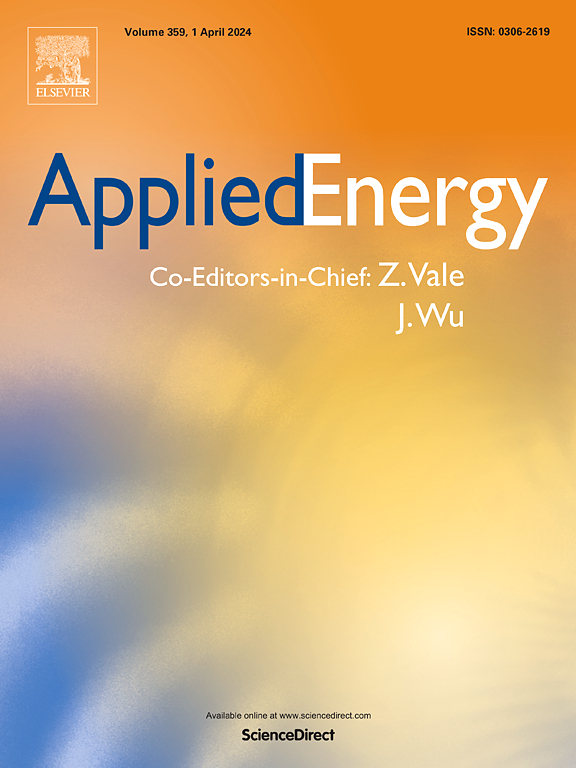Modelling and analysis of V-shaped bifacial PV systems for agrivoltaic applications: A Python-based approach for energy optimization
IF 10.1
1区 工程技术
Q1 ENERGY & FUELS
引用次数: 0
Abstract
Agrivoltaic systems integrate photovoltaic (PV) energy production with agricultural activities, addressing the critical challenges of land use optimization and sustainable energy generation in the context of climate changes and food security. These systems are pivotal in offering a promising solution in mitigating the environmental and social impacts of utility-scale PV installations, such as habitat disruption and competition with agricultural land. This study evaluates a patented V-shaped bifacial photovoltaic system with a single-axis solar tracking, designed to optimize energy capture but also to minimize shading effects on crops like vineyards. A custom Python-based algorithm using PVlib was developed to simulate the performance of the system, accounting for mutual shading, multiple solar radiation reflections, and dynamic tilt adjustments. Simulations conducted for Palermo, Italy, revealed that the system collects 5.2 % less solar irradiation than traditional side-by-side configurations but achieves an annual energy output of 2089.3 kWh per pair of panels, along with 24 % reduction in land use. These results highlight the system capability to optimize spatial efficiency while maintaining high energy production. The novelty of this work lies in its tailored simulation approach, addressing the unique geometry and operational dynamics of the V-shaped configuration, and its potential adaptability to diverse agrivoltaics scenarios. Unlike existing tools and methodologies in the literature, this work introduces a customized Python-based model specifically designed to analyse the performance of this innovative structure, which is of recent conception and lacks precedent in both academic studies and commercial software solutions. By advancing the methodological framework for integrating renewable energy with agriculture, this study contribute to the broader goals of sustainable development and climate resilience.
求助全文
约1分钟内获得全文
求助全文
来源期刊

Applied Energy
工程技术-工程:化工
CiteScore
21.20
自引率
10.70%
发文量
1830
审稿时长
41 days
期刊介绍:
Applied Energy serves as a platform for sharing innovations, research, development, and demonstrations in energy conversion, conservation, and sustainable energy systems. The journal covers topics such as optimal energy resource use, environmental pollutant mitigation, and energy process analysis. It welcomes original papers, review articles, technical notes, and letters to the editor. Authors are encouraged to submit manuscripts that bridge the gap between research, development, and implementation. The journal addresses a wide spectrum of topics, including fossil and renewable energy technologies, energy economics, and environmental impacts. Applied Energy also explores modeling and forecasting, conservation strategies, and the social and economic implications of energy policies, including climate change mitigation. It is complemented by the open-access journal Advances in Applied Energy.
 求助内容:
求助内容: 应助结果提醒方式:
应助结果提醒方式:


